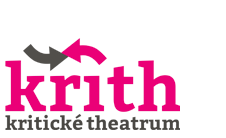MK: I think it's really interesting, and I love that you included it in the production. Since we mentioned Schrödinger — just a silly question — what do you think happened to Schrödinger’s cat? Is it dead or alive?
ŁT: That’s the most beautiful paradox — both in life and in quantum physics. I would say that, in the world we’ve created, where we try to translate quantum laws into human emotions, we are actually living in that paradox. It’s probably difficult for people because we tend to think of ourselves as Newtonian creatures — either dead or alive, existing or not. But when we think about our emotions, they are more like Schrödinger’s cat. We contain contradictions. Life itself is one enormous contradiction that we live through.
The concept of wave function collapse — that's what it's called, right? — captures it perfectly. In a quantum state, all possibilities coexist. That leads to Hugh Everett’s theory of multiverses, where every decision point creates a split — and all the potential outcomes exist in parallel universes. Before we choose, every option is possible. That’s what I truly believe. We should be teaching quantum physics much more, even to children, because it completely changes how we judge ourselves and how we see the world.
We are not Newtonian objects, where inputs lead to predictable outputs. This connects to the mystery of consciousness — which, by the way, is the theme of our next piece, based on the life of Alan Turing and the question of artificial intelligence. Nobel Prize winner Roger Penrose says he doesn’t believe that computers will ever be capable of real intelligence or consciousness — and certainly not through computation alone. Computers operate in a binary system — they calculate, they simulate — but real intelligence, real consciousness, requires something else. It requires randomness. That randomness is the most beautiful aspect of quantum physics. I remember working several years ago in Hanover on a piece called Once Upon a Time Life, about biology and genetics. At one point, we hit a wall and became a bit depressed, realizing how deterministic everything seemed. We saw ourselves as biochemical machines, made up of serotonin and dopamine, predictable chemical systems. That kind of determinism is bleak. But quantum physics gives life meaning again — because it introduces uncertainty, unpredictability.
This isn’t a matter of lacking the tools to predict — it's simply impossible to predict. Life, at the subatomic level, is ruled by randomness. That randomness makes life feel infinite and unknowable. And these quantum states — where something can be both dead and alive, or up and down at the same time — are incredibly relevant to how we experience human nature, emotions, and our relationship with the world. Another important shift that quantum physics introduces is a focus on relationships, not particles. We can’t really say much about particles themselves, but we can measure the relationships between them. A particle doesn’t “exist” until it’s observed. As Niels Bohr said, we shouldn’t be interested in what the electron does when we’re not observing it. It's only in the act of observation that it becomes something. This idea of the observer-participant relationship is also very relevant to human interactions.
We often see ourselves as solid, independent beings, but we’re constantly changing in response to others. Just now, as I speak with you, I am not the same person I was ten minutes ago. This ongoing transformation — this process of exchange — is at the core of human experience.
MK: Do you see quantum physics as a useful metaphor for exploring human emotions? For example, isn’t love itself a kind of quantum phenomenon, metaphorically speaking?
ŁT: I think I already answered this question earlier, yes. Because that’s really the core of it — the biggest insight quantum physics gives us is an extreme paradigm shift. And that’s likely why it’s still not very popular. We kept asking ourselves during the process: Why didn’t the discoveries of quantum physics change our understanding of the world the way Newton’s Principia did? Once Newton published that work, everything shifted. The world became explainable. We could rationalize it. We began to feel like we had some control, some agency over what happens around us. But that shift didn’t happen with quantum physics. Even today, it hasn’t entered mainstream understanding. Schools still teach it as something overly complicated — something that doesn’t “really apply” to us because we live on the macro scale, while quantum events happen deep in the micro world of particles. I think that’s completely false. And in that way, love, emotions — all of it — make much more sense through a quantum lens than a classical one.







